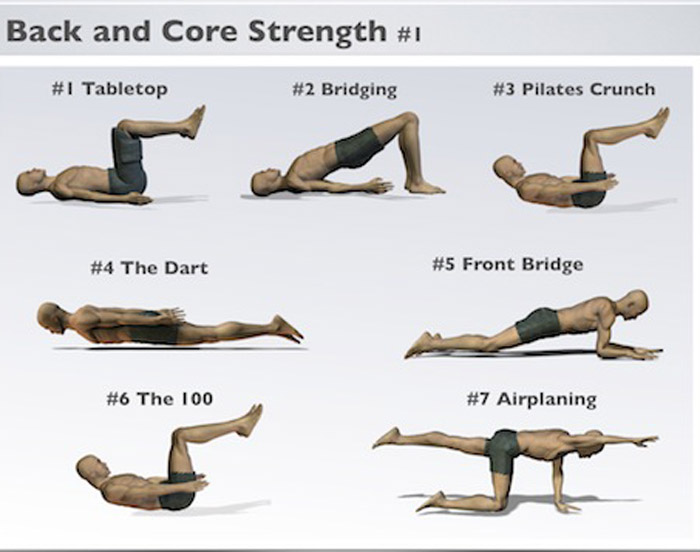Spinal Manipulative Therapy and Exercise for Older Adults with Chronic Low Back Pain: A Randomized Clinical Trial
SOURCE: Chiropractic & Manual Therapies 2019 (May 15); 27: 21
Craig Schulz, Roni Evans, Michele Maiers, Karen Schulz, Brent Leininger and Gert Bronfort
University of Minnesota,
Mayo Building C504,
420 Delaware Street SE,
Minneapolis, MN 55455, USA
Background Low back pain (LBP) is a common disabling condition in older adults which often limits physical function and diminishes quality of life. Two clinical trials in older adults have shown spinal manipulative therapy (SMT) results in similar or small improvements relative to medical care; however, the effectiveness of adding SMT or rehabilitative exercise to home exercise is unclear.
Methods We conducted a randomized clinical trial assessing the comparative effectiveness of adding SMT or supervised rehabilitative exercise to home exercise in adults 65 or older with sub-acute or chronic LBP. Treatments were provided over 12–weeks and self-report outcomes were collected at 4, 12, 26, and 52 weeks. The primary outcome was pain severity. Secondary outcomes included back disability, health status, medication use, satisfaction with care, and global improvement. Linear mixed models were used to analyze outcomes. The primary analysis included longitudinal outcomes in the short (week 4–12) and long-term (week 4–52). An omnibus test assessing differences across all groups over the year was used to control for multiplicity. Secondary analyses included outcomes at each time point and responder analyses. This study was funded by the US Department of Health and Human Services, Health Resources and Services Administration.
Results 241 participants were randomized and 230 (95%) provided complete primary outcome data. The primary analysis showed group differences in pain over the one-year were small and not statistically significant. Pain severity was reduced by 30 to 40% after treatment in all 3 groups with the largest difference (eight percentage points) favoring SMT and home exercise over home exercise alone. Group differences at other time points ranged from 0 to 6 percentage points with no consistent pattern favoring one treatment. One-year post-treatment pain reductions diminished in all three groups. Secondary self-report outcomes followed a similar pattern with no important group differences, except satisfaction with care, where the two combination groups were consistently superior to home exercise alone.
There are more articles like this @ our:
Conclusions Adding spinal manipulation or supervised rehabilitative exercise to home exercise alone does not appear to improve pain or disability in the short- or long-term for older adults with chronic low back pain, but did enhance satisfaction with care.
TRIAL REGISTRY: www.ClinicalTrials.gov; Identifier: NCT00269321
From the FULL TEXT Article:
Background
The world’s population is rapidly aging, with the number of individuals 60 years of age and older projected to increase three-fold by 2050. [1] It is estimated that as many as 76 to 82% of community-dwelling older adults experience persistent non-cancer pain. [2, 3] Low back pain (LBP) is one of the leading causes of musculoskeletal related disability for older adults [4, 5] with prevalence rates ranging from 32 to 58%. [6, 7] It is estimated that 25% of older adults take analgesic medications and 8 to 14% take opioids, with use more prevalent in those with lower socioeconomic status. [3, 8] Importantly, opioid misuse among older pain sufferers is on the rise [9] while concerns continue to grow regarding the undertreatment of pain. [10] When considered in aggregate, these issues support the need to identify safe and effective non-pharmacologic pain management strategies for older adults.
Recent systematic reviews have concluded there is evidence to support the use of spinal manipulative therapy (SMT) and exercise as non-pharmacologic treatment options for chronic LBP. [11, 12] Further, interventions that promote self-management are also advocated [13] to help patients learn and engage in pain management behaviors over the long term in their daily lives. [14] Importantly, there has been relatively little research assessing the effectiveness of these approaches for older adults. A systematic review of manual therapies for older adults found moderate evidence to support their use, but noted more rigorous trials are warranted. [15] Two clinical trials in older adults have shown SMT results in similar or small improvements in function relative to medical care. [16, 17] Finally, in another study focused on older adults with neck pain, the addition of SMT to a home exercise program aimed at encouraging self-management, resulted in greater neck pain reduction at the end of 12 weeks compared to either a supervised exercise program with home exercise, or home exercise alone. [18] Currently, for older adults with LBP, it is unclear whether adding SMT or supervised rehabilitative exercise to a home exercise program would offer similar advantages as observed for neck pain.
The purpose of this randomized clinical trial was to assess the relative short- and long-term effectiveness of adding spinal manipulative therapy (SMT) or a supervised exercise program (SEP), to a home exercise program (HEP), compared to HEP alone, for adults 65 years of age and older with low back pain.
Read the rest of this Full Text article now!






Leave A Comment